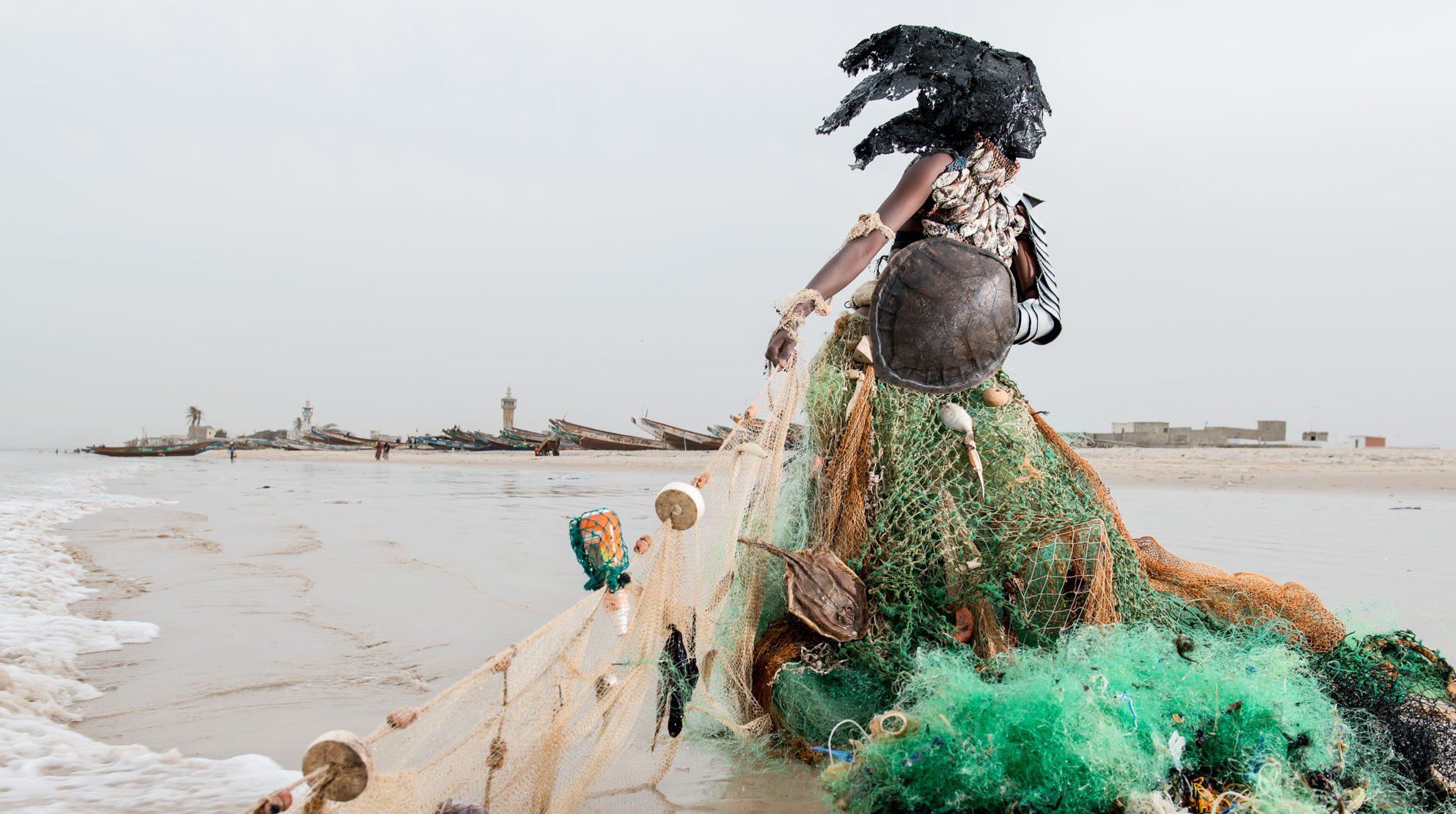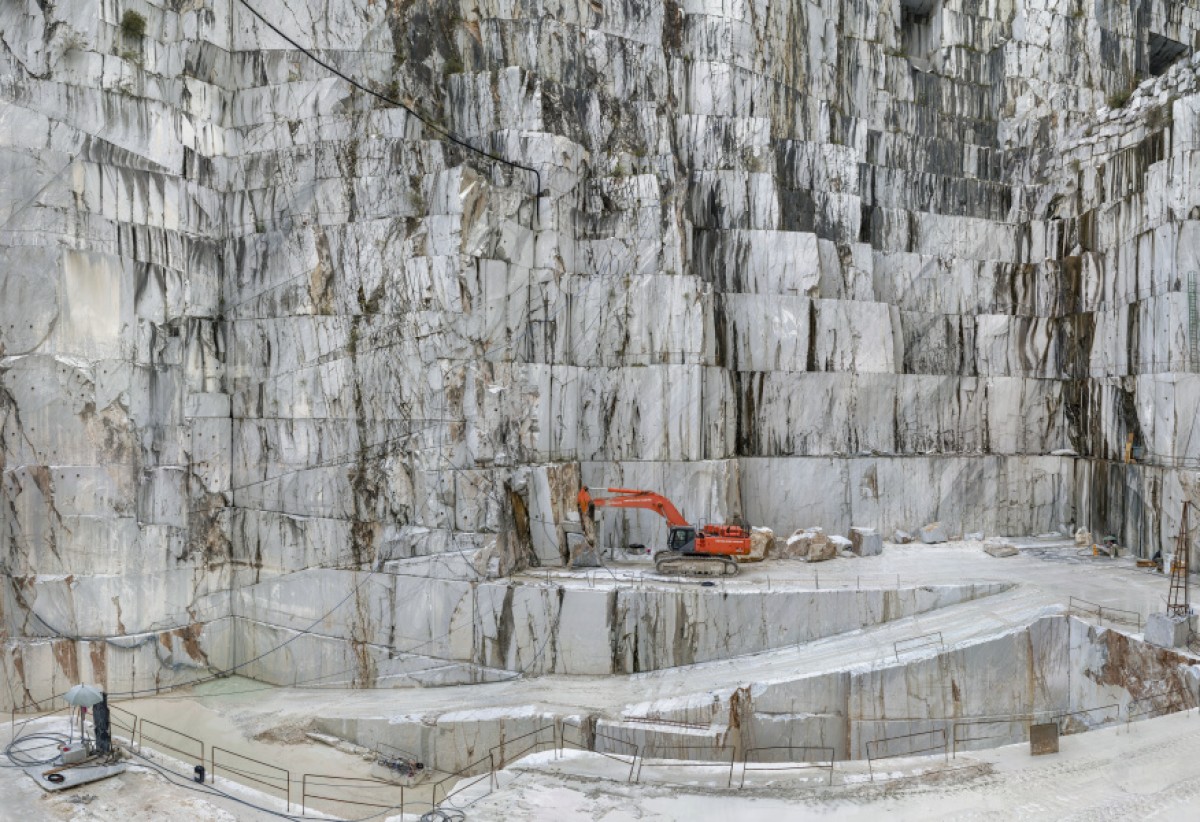Reflection: Carolyn
The discussions and readings that stook out to me the most were those that discussed art as a vehicle towards environmental improvement. Pieces such as Justin Guariglia’s “Climate Signs,” and Fabrice Monteiro’s, “The Prophecy of Senegal,” use art as a medium to communicate urgency. “Climate Signs” discussed the dangers of climate denial with a blunt approach by displaying messages such as, “vote eco-logically.” and “climate denial kills.” Guariglia’s unapologetic approach with these phrases is continued in Monterio’s work as he captures striking images depicting the lives of Senegalians.

His photographs exhibit the overwhelming environmental damage, and mass destruction which emphasizes the global inequality of the climate crisis. Additionally, his photos represent a prime example of an externality within the climate crisis. These Senegalians are not the ones contributing these mass amounts of pollution, yet, they are the ones who are suffering the consequences. I learned about the term “externalities” when I was writing my second blogpost on SuperFreakonomics, where I discuss how the climate change movement has begun to take on the feel of a religion.
The combination art for the environment, and religion in the form of the climate change movement, prompts me to discuss the work of philosopher Georg Wilhelm Friedrich Hegel. Hegel was a prominent figure in the idealism movement and is a fundamental figure in modern Western philosophy. He published a Lecture on Fine Art which discussed his theories on aesthetics within art, ranging from painting, and sculpture, to modernism. In his discussion of modernist art, he outlines his belief that this movement marked the “end of art.” To Hegel, art’s main purpose, along with religion and philosophy, is to gain more knowledge of God, or as Hegel puts it, “the Absolute,” (10). Art - for instance, that of ancient Greece, or the late Middle Ages - was heavily influenced by religion, as its primary function was to imagine the Absolute into a visible medium. However, as art evolved, it progressed from illustrating the Absolute, to illustrating human culture. This humanization of art allowed for the popularization of secular works, which, for Hegel, no longer fulfills art’s fundamental purpose. He believes that art was a crucial factor in the religious lives of various cultures, and civilizations. Therefore, as art began to free itself of its linkage to religion, it marked its death, “In all these respects art, considered in its highest vocation, is and remains for us a thing of the past. Thereby it has lost for us genuine truth and life, and has rather been transferred into our ideas instead of maintaining its earlier necessity in reality and occupying its higher place,” (11).
I understand the desire of nonsecular art, as it allows its believers to have faith in a higher power. I understand the desire to crave an escape from reality, and hold out hope for a greater presence on this planet. However, whether or not God is real, the fact is that God is not with us in this life, and it is up to us - as individuals, as a community, as a society - to determine how we want to live it. Therefore, I disagree with Hegel’s thesis that “art is dead,” as art has the ability, now more than ever, to provoke, educate, and inspire its viewers. For instance, I am reminded of an exhibit I recently visited at the Art Gallery of Ontario, titled, “Anthropocene: The Human Epoch,” which visualized the human influence on the Earth in both a geological and planetary scale. The exhibit displayed a series of photographs, films, and augmented reality installations by Edward Burtynsky, Jennifer Baichwal, and Nicholas de Pencier, revealing the irreversible marks of human activity. Their works allowed the viewers to note the gravity of our impact on the planet in the hopes of urging them towards change. It is art such as that of Burynsky, Baichwal, and de Pencier, which allows a society to reevaluate how they live their lives, and rethink their cultural norms.

Therefore, I challenge Hegel’s belief that art no longer visualizes “the Absolute,” as I believe it still does. Similarly to the Earthseed religion where God is not a person but is change itself, or the SuperFreakonomics example which describes the climate movement as a religion, environmental art therefore still manages to be powerful in Hegelian terms as it visualizes some sort of nonsecular art.
This habit I have to relate our discussion and readings to art, or philosophers of art continues in our discussion of the documentary, Symbiotic Earth. The documentary describes the practical, diverse, and medicinal purposes for bacteria in their power to heal, sustain, and contribute to the regeneration of life. Being a fashion design major, I researched certain ways that bacteria has aided in the industry. Textile manufacturers such as MycoWorks have begun growing fabric from fungi bacteria in order to create a biodegradable, eco-friendly leather alternative.

Additionally, Natsai Audrey Chieza, CEO of Faber Futures, manufactures clothes dyed with bacteria. Rather than using mainstream natural dyes which fade over time, she found an alternative method of sustainable dying which consists of growing bacteria such as E. coli, or coelicolours, onto fabric and then sealing it.

Our class readings and discussions have influenced me to research methods in which I can impact environmental improvement through the fashion industry. This course has opened my eyes to the catastrophic realities of the climate and has identified potential solutions I want to pursue.
(CB)
Comments
Post a Comment